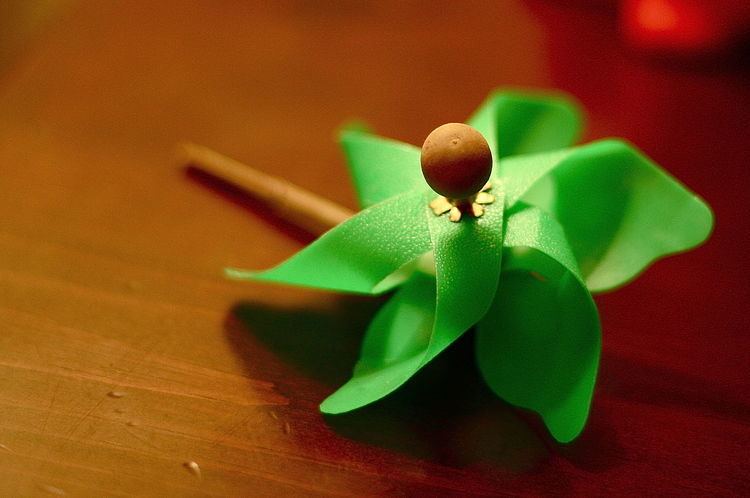 | ||
A pinwheel is a simple child's toy made of a wheel of paper or plastic curls attached at its axle to a stick by a pin. It is designed to spin when blown upon by a person or by the wind. It is a predecessor to more complex whirligigs.
Contents
History
During the nineteenth century in the United States, any wind-driven toy held aloft by a running child was characterized as a whirligig, including pinwheels. Pinwheels provided many children with almost endless hours of enjoyment and amusement.
An Armenian immigrant toy manufacturer, Tegran M. Samour, invented the modern version of the pinwheel, originally titled "wind wheel," in 1919 in Boston, Massachusetts. Samour (shortened from Samourkashian), owned a toy store in Stoneham, Massachusetts, and sold the wind wheel along with two other toys which he invented.
Mechanics
While you can simply blow on one side of a pinwheel to make it go, it will surprisingly turn if you blow on the top and bottom equally. The pinwheel spins because each curl acts like a rudder in the airflow around the pin. The air going with the curls gets slowed as it is drawn in to the wheel, while air going against the curls gets diverted around the wheel. The momentum change from the air which is drawn into the wheel is much greater than the drag on the other side of the wheel where the air is simply diverted. The pinwheel is not used as a machine because long curls needed for torque would act more like a straight weather vane than a turning rudder, and the air travel through the center must be limited for the same reason.
